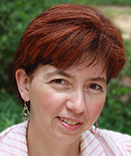
USAID uses science and technology to achieve, sustain and extend its development impact around the world. Geospatial analysis, which combines scientific methods, cutting edge technology and advanced data visualization, allows the Agency to improve decision-making and programming on issues at the core of its development work, such as improving resilience to natural disasters and responding to climate change, by identifying strategies that are well suited to a particular implementation site or area.
USAID’s Land Tenure and Resource Management (LTRM) Office is home for two of the Agency’s Geospatial Analysts. Ms. Ioana Bouvier and Ms. Silvia Petrova manage all geospatial analytical aspects of the office land and resource governance portfolio. Bouvier and Petrova leverage powerful geospatial analytic processes combined with advanced data management to create compelling visual and statistical information that communicates vital land and resource governance information to a broad audience, including policy and decision makers.

With their strong backgrounds in data analysis, data visualization, Geographic Information Systems (GIS) and remote sensing, Ms. Bouvier and Ms. Petrova transform complex geospatial data into actionable information, which informs everything from project design and implementation to data management strategies to sector assessments and policy making. They also work in close collaboration with other USAID Washington offices, overseas Missions, and a number of U.S. Government agencies and departments to incorporate geospatial tools and techniques into a variety of development activities. They collaborate with the Agency’s Global Development Lab to develop geospatial data standards, build agency capacity, and create innovative solutions to development challenges.
Bouvier and Petrova are also helping connect the dots across sectors using rigorous analysis to evaluate land and natural resource dynamics in the context of agriculture. They recently completed a preliminary analysis of historical forest cover change in 19 countries across three continents to shed light on the historical land cover change patterns in potential USAID programming areas and expands learning opportunities while also enhancing decision support.
Beyond this important role supporting improved decision-making and programming through the development, visualization, and analysis of more comprehensive data, Ms. Bouvier and Ms. Petrova are also helping to build the capacity of USAID staff and working closely with implementing partners to apply geospatial analytic methods and build geospatial capacity of host-country partners to make programming more sustainable over time. Ms. Bouvier and Ms. Petrova have participated in an Agency-wide GIS training workshop bringing a focus on land and resource management to several sessions and furthering cross-bureau coordination.
With science, technological innovation and data visualization increasingly recognized as having great potential to improve development programming, the LTRM Office’s geospatial analysts are bringing powerful tools to help reduce extreme poverty, promote resilient societies, improve land and resource governance and strengthen property rights for all members of society, especially women.

